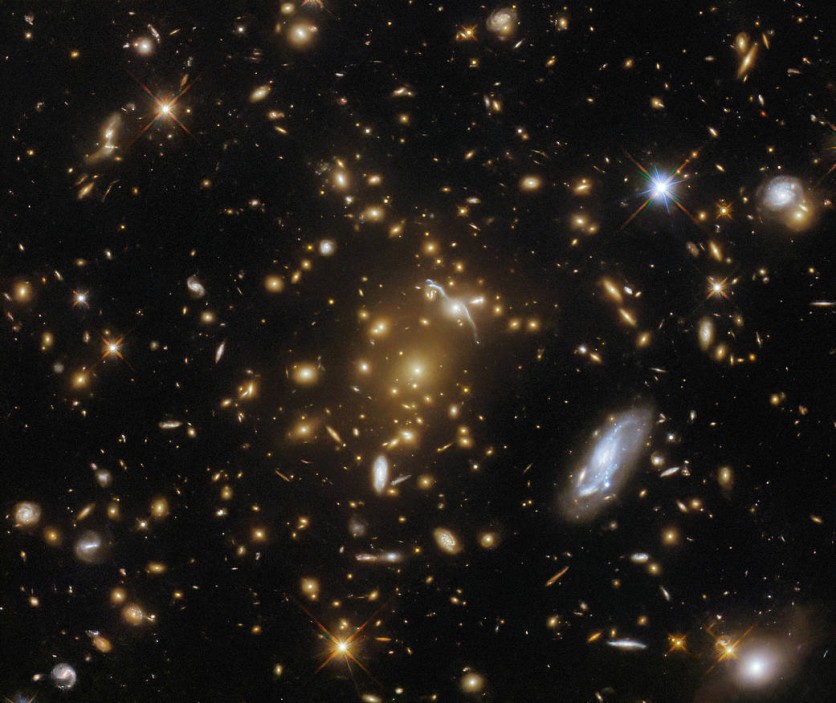Somewhere in deep space, a gigantic galaxy cluster is bending lights!
NASA's Hubble Space Telescope has captured a breathtaking image of a massive galaxy cluster that appears like a cosmic leviathan causing ripples in the fabric of spacetime.
This gargantuan cluster, known as eMACS J1823.1+7822, resides nearly nine billion light-years away in the constellation Draco. Its immense mass warps spacetime, forming a gravitational lens that bends and distorts the light from distant galaxies located beyond the cluster.
The result is a mesmerizing display of contorted streaks and arcs of light, painting a captivating cosmic portrait.

Light-bending Galaxy Cluster
Light-bending refers to the phenomenon where the path of light is altered or bent due to the gravitational pull of a massive object, such as a galaxy cluster. The immense mass of the cluster curves spacetime, creating a gravitational lens.
As light from distant galaxies passes through the gravitational field of the cluster, its path is deflected, resulting in the distortion and bending of the light rays. This bending effect allows astronomers to observe and study distant galaxies that would otherwise be too faint or distant to detect.
In an effort to unravel the mysteries of these gravitational lenses and gain insights into the distribution of dark matter within galaxy clusters, Hubble has embarked on a journey to explore five enormous clusters.
By measuring the strengths of these lenses, astronomers can delve into the secrets of the universe hidden within. These gravitational lenses, such as eMACS J1823.1+7822, act as natural telescopes, magnifying and revealing faint or distant objects that would otherwise remain invisible.
The image presented to us combines data from eight different filters and two powerful instruments onboard Hubble: the Advanced Camera for Surveys and the Wide Field Camera 3. These instruments allow astronomers to observe celestial objects within specific wavelengths of the electromagnetic spectrum.
By employing filters, scientists can selectively capture light at precise wavelengths, enabling a deeper understanding of an object's structure, composition, and behavior. The multiwavelength approach employed in this image provides a comprehensive view that surpasses what visible light alone could unveil.
Celestial Tapestry of Cosmic Wonders
Surrounding the massive galaxy cluster are a multitude of other galaxies, creating a celestial tapestry of cosmic wonders. Scattered throughout the image, one can also spot a few foreground stars exhibiting characteristic diffraction spikes, adding a touch of stellar elegance to the scene.
This extraordinary observation of eMACS J1823.1+7822 serves as a testament to the power and capability of the Hubble Space Telescope. Through its lens, we are granted a glimpse into the vast cosmic landscape, where light is bent and distorted, unveiling hidden treasures of the universe.
The significance of this image lies in its demonstration of gravitational lensing, its potential to unveil the distribution of dark matter, its utilization of multiwavelength observations, and its contributions to cosmological research.
Related Article : Starry Pair: NASA's Hubble Captures Stunning Portrait of Spiral Galaxies Resembling Milky Way

ⓒ 2025 TECHTIMES.com All rights reserved. Do not reproduce without permission.




